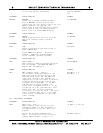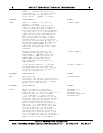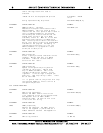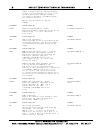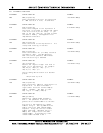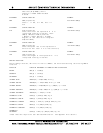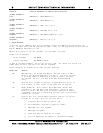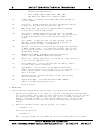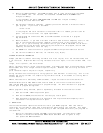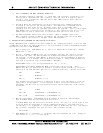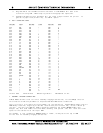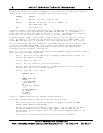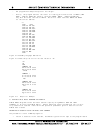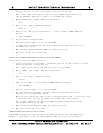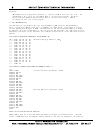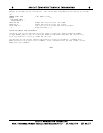
2. THIS IS PROBABLY THE MOST IMPORTANT SPEED HINT.
Use variables instead of constants. It takes more time to convert a constant to its
floating point representation than it does to fetch the value of a simple or matrix
variable. This is especially important within FOR...NEXT loops or other code that
is executed repeatedly.
3. Variables which are encountered first during the execution of a BASIC program are
allocated at the start of the variable table. This means that a statement such as
5 A=0:B=A:C=A, will place A first, B second, and C third in the symbol table
(assuming line 5 is the first statement executed in the program). Later in the program,
when BASIC finds a reference to the variable A, it will search only one entry in the
symbol table to find A, two entries to find B and three entries to find C, etc.
4. Use NEXT statements without the index variable. NEXT is somewhat faster than
NEXT I because no check is made to see whether the variable specified in the NEXT
is the same as the variable in the most recent FOR statement.
D CONVERTING BASIC PROGRAMS NOT WRITTEN FOR AIM 65 BASIC
Though implementations of BASIC on different computers are in many ways similar, there are some
incompatibilities which you should watch for if you are planning to convert some BASIC programs
that were not written in AIM 65 BASIC.
1. Matrix subscripts. Some BASICs use "[" and "]" to denote matrix subscripts. AIM 65
BASIC uses "(" and ")".
2. Strings. A number of BASICs force you to dimension (declare) the length of strings
before you use them. You should remove all dimension statements of this type from
the program. In some of these BASICs, a declaration of the form DIM A$(I,J) declares
a string matrix of J elements each of which has a length I. Convert DIM statements of
this type to equivalent ones in AIM 65 BASIC: DIM A$(J).
AIM 65 BASIC uses "+" for string concatenation, not "," or "&".
AIM 65 BASIC uses LEFT$, RIGHT$ and MID$ to take substrings of strings. Other
BASICs uses A$(I) to access the Ith character of the string A$, and A$(I,J) to take a
substring of A$ from character position I to character position J. Convert as follows:
OLD AIM 65
A$(I) MID$(A$,I,1)
A$(I,J) MID$(A$,I,J-I+1)
This assumes that the reference to a substring of A$ is in an expression or is on the
right side of an assignment. If the reference to A$ is on the left hand side of an
assignment, and X$ is the string expression used to replace characters in A$, convert
as follows:
OLD AIM 65
A$(I)=X$ A$=LEFT$(A$,I-1)+X$+MID$(A$,I+1)
A$(I,J)=X$ A$=LEFT$(A$,I-1)+X$+MID$(A$,J+1)
3. Multiple assignments. Some BASICs allow statements of the form: 500 LET B=C=0.
This statement would set the variables B & C to zero.
In AIM 65 BASIC this has an entirely different effect. All the "='s" to the right of the
first one would be interpreted as logical comparison operators. This would set the
variable B to -1 if C equaled 0. If C did not equal 0, B would be set to 0. The easiest
way to convert statements like this one is to rewrite them as follows:
500 C=0:B=C
4. Some BASICs use "/" instead of ":" to delimit multiple statements per line. Change all
occurrences of "/" to ":" in the program.



